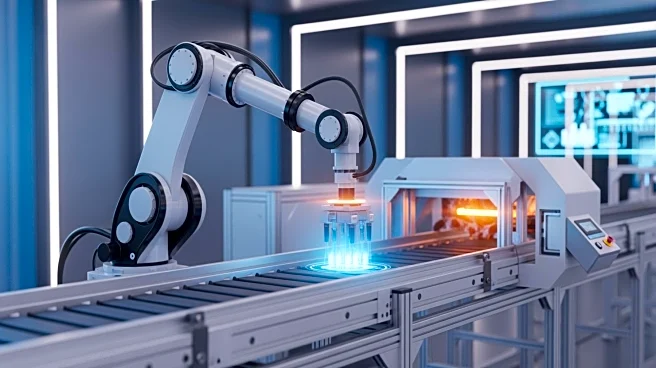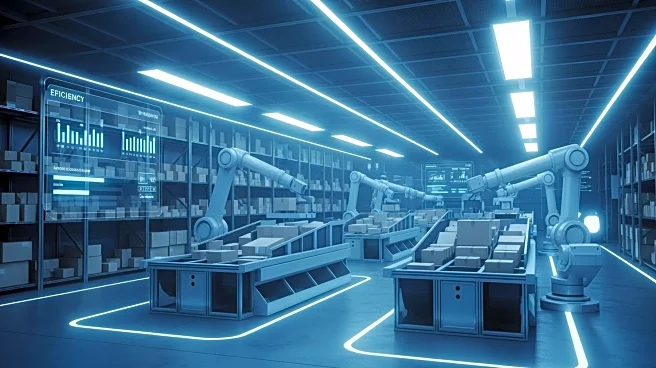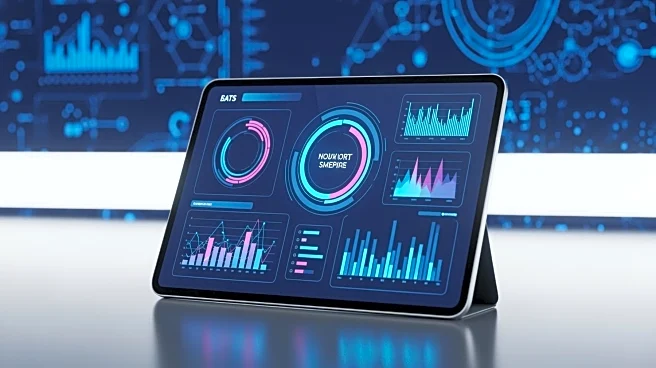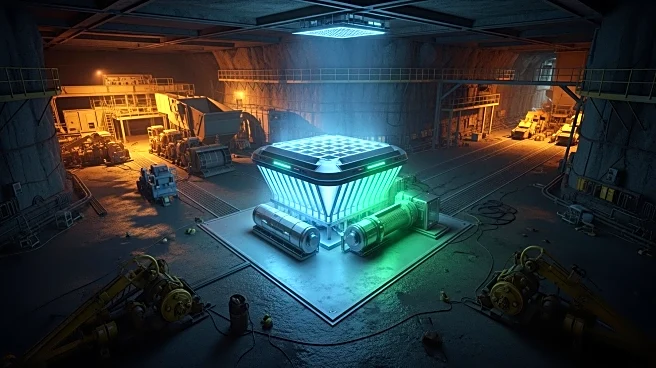What's Happening?
The mining industry is experiencing a significant technological shift with the adoption of advanced optimal slope mining technology. This innovation is transforming open-pit operations by introducing automated algorithms that enhance mining efficiency
and reduce environmental impact. The technology integrates sophisticated computational frameworks, combining finite element analysis with machine learning algorithms to optimize slope angles based on real-time geological data. This approach allows for more precise excavation planning, reducing waste stripping volumes by 2-5% per degree of slope angle steepening. The mining software market, valued at approximately USD 13.9 billion in 2022, reflects the industry's growing recognition of digital transformation benefits. Implementing slope optimization systems has led to significant reductions in diesel fuel consumption, equipment depreciation costs, and labor requirements, while also minimizing environmental impact through reduced greenhouse gas emissions.
Why It's Important?
The adoption of optimal slope mining technology is crucial for the mining industry as it addresses both economic and environmental challenges. By optimizing waste-to-ore removal ratios, mining operations can achieve substantial cost savings, particularly in large-scale operations where waste movement costs are significant. The technology also extends mine life by allowing access to previously uneconomical reserves, thus improving overall project economics. Environmentally, the technology supports corporate decarbonization efforts by reducing diesel consumption and associated emissions. This aligns with growing stakeholder demands for responsible resource extraction and contributes to the industry's sustainability goals. The integration of digital transformation in mining operations is a strategic move that positions companies competitively, offering operational efficiency gains and environmental stewardship.
What's Next?
As the mining industry continues to embrace digital transformation, further advancements in slope optimization technology are anticipated. The integration of artificial intelligence and Internet of Things (IoT) sensor networks is expected to enhance predictive capabilities and real-time data processing. Future developments may include the use of quantum computing for complex optimization problems and blockchain technology for data verification. The industry is likely to see increased adoption of autonomous mining equipment, which requires precise slope design parameters for optimal operation. These technological advancements will continue to drive efficiency and sustainability in mining operations, offering long-term benefits for companies that invest in these innovations.
Beyond the Headlines
The shift towards optimal slope mining technology also raises ethical and regulatory considerations. As mining companies adopt these advanced systems, they must navigate complex integration challenges while ensuring compliance with varying regulatory standards across jurisdictions. The technology's ability to minimize environmental impact and support sustainable mining practices aligns with broader societal goals of reducing carbon footprints and preserving biodiversity. However, the reliance on advanced technology also necessitates robust data management and cybersecurity measures to protect sensitive geological and operational information. The industry's commitment to responsible mining practices will be critical in maintaining social license to operate and fostering trust among stakeholders.













